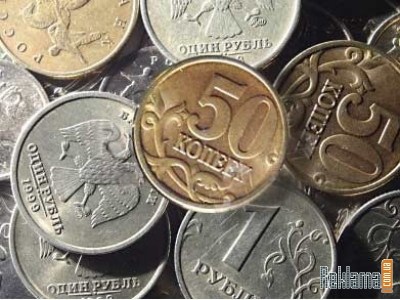If you need to simply and quickly create an animation of facial expressions, blinking of eyes, speech, there is a simple and convenient way. When creating serious projects, such as animated films, other, more accurate methods are most often used. But for something simple is fine.
If there is no character for which you want to create facial animation, I will tell you how to create the most elementary head model that is suitable only for explaining the principle of the Morph modifier on it.
So, to the point. Run 3Ds max. On the right side of the screen, the Create and Geometry buttons are pressed by default, so you can immediately select the Sphere ball creation button. Click this button and in the Front viewport drag the sphere. At the bottom right, the settings sections of the created ball will appear. In the Segments counter, put the number 14.

Select the tool to move the Select and Move objects. It is located on the toolbar at the top of the screen. On the tool button, a cross of arrows is drawn. For the yellow icon that appears, similar to the coordinate system, you can move the selected object.
With the Shift key held down, drag the ball up. A copy of it will be created. Highlight the created copy. Click the Modify button on the command panel. In the settings of the sphere, change its radius to look like the image below.

Right click on the small ball and select the line Convert to - convert to Editable Poly. The editable grid settings will appear on the right side of the screen. In the Selection section, click the Polygon button, it shows a red square. Select and delete a polygon sector to make it as shown in Figure 3.

Turn off polygon selection mode and copy the object in the left view so that there are two of them. In the same way, you need to cut the sector of polygons in a large area.

Select the bottom, large sphere. In the settings of her mesh, find the Attach button and click on the two upper spheres to join and become one mesh. Go to the selection level of polygons and select on the lower sphere and one of the top one opposite polygon. Click the Bridge button in the editable grid settings and in the appeared window enter the value 3 in the Segments counter, and in the Taper counter enter a small negative value.

Also attach the second ball. Turn off polygon selection mode and select the Shell modifier in the Modifier List. Configure the modifier settings with a small object thickness, again convert it into an editable grid. This will be the head on which we will train. Balls can be inserted into empty eye sockets as if they were eyeballs. Subsequently, we will apply a smoothing modifier to the object, but for now let it remain as it is.
Go to the main thing.
Create three copies of the head. Each copy needs to be renamed. To do this, select the copy, go to the Modify tab, and enter the name in the text field instead of the standard object name (instead of the Sphere 01 line). Name the first copy "closed mouth", the second - "closed eyes", the third, - "cry".
Select the object “closed mouth”. When selecting and moving its polygons or vertices, close the mouth of this head. On the “closed eyes” model, do not touch your mouth, but close your eyes.
And on the “Cry” model, expand the mouth, as if the head is crying.

You can create as many copies as you like. You can make a copy with a smile, with a grimace of sadness, disgust, and much more. The main rule to follow is that you cannot add or delete vertices, faces, or planes on copies. You can only move what is available. Therefore, when creating an original model, you need to think about which facets can be useful for giving the model a smile look, for example.
Copy work is finished. Highlight the original model. Click the Modify tab. In the Modifier List drop-down list, select the Morph modifier. The modifier settings will appear below. Pay attention to the vertical row of buttons, each of which is written empty, and to the right of each button is a counter with a zero value. These are the morph channels.
Right-click on the first button, and a menu with just one line will pop up: "Pick Object From Scene." Click on this line and then click on the “closed mouth” object. Instead of the inscription “empty” on the button appears the inscription “closed mouse”. If you now change the value in the counter near this button from 0 to 100, the head will smoothly change the view of the “closed mouth” object, that is, the mouth will close.
In the same way, assign the channels of two more buttons, for closing the eyes and for opening the mouth.
After this, the copies can be deleted, the morph will work without them. For speech animation, copies are usually made for all morphemes.
You can apply the Mesh Smooth modifier to the model.

Animation of facial expressions in 3Ds max
After setting the morph targets, the mimic animation is to work with the counters in the key creation mode.
For example, in a nutshell I will tell you exactly how the animation is done by counters. It is very simple. At the bottom of the screen is a scale of animation, similar to the ruler with tick marks. About the same there is a button Auto Key. Click it. The scale will turn red. Move the animation slider to the twentieth frame. Change the value in one of the counters, for example, in the “closed mouth” counter. Click the Auto Key button again to turn off the animation creation mode. Now from zero to twentieth frame the character's mouth will close. To check this, click the Play Animation button.
The character model rarely consists only of the head, usually the torso is also present. The torso is not configured by morph; other, more complex methods are used for this. Inside the character are inserted special auxiliary objects, called bones, and playing the role of the skeleton. With the help of a special modifier, separate parts of the character's surface are attached to the corresponding bones.
The Morph modifier should be located in front of all others, immediately after the grid.





 Автор: botton, 14.04.2016 20:00 1. Suzuki SV650 Немногие мотоциклы пользуются настолько массовой
Автор: botton, 14.04.2016 20:00 1. Suzuki SV650 Немногие мотоциклы пользуются настолько массовой
 Мы бы хотели завести речь отнюдь не об этом, а о том, что многим из нас свойственно умиляться
Мы бы хотели завести речь отнюдь не об этом, а о том, что многим из нас свойственно умиляться
 Музыка, еда, путешествия: прикольные кресла-мешки от компании Woouf Автор: lakshmie, 29.07.2011
Музыка, еда, путешествия: прикольные кресла-мешки от компании Woouf Автор: lakshmie, 29.07.2011
 Автор: angel, 28.01.2008 23:30 Недавно они обукрасили Мадрид своим скульптурным освещением к
Автор: angel, 28.01.2008 23:30 Недавно они обукрасили Мадрид своим скульптурным освещением к
 Автор: Lihtarik, 26.12.2015 21:12 Компания Emilio Pucci славится тем, что выпускает одежду,
Автор: Lihtarik, 26.12.2015 21:12 Компания Emilio Pucci славится тем, что выпускает одежду,
 Главная функция этой трости, как и любой другой палочки для старых людей и для людей с проблемами
Главная функция этой трости, как и любой другой палочки для старых людей и для людей с проблемами
 Весной 2015 года отмечает вековой юбилей один из интереснейших российских проектов начала прошлого
Весной 2015 года отмечает вековой юбилей один из интереснейших российских проектов начала прошлого
 Оригинальное здание с футуристической крышей будет построено в финансовом районе Эр-Рияда за 4
Оригинальное здание с футуристической крышей будет построено в финансовом районе Эр-Рияда за 4
 Автор: Машkа, 24.03.2008 23:21 Поверхность этой плиты демонстрирует нигде до этого неиспользуемые
Автор: Машkа, 24.03.2008 23:21 Поверхность этой плиты демонстрирует нигде до этого неиспользуемые
 Известное российское предприятие ЗИЛ выпустил произведшее за Западе фурор транспортное средство.
Известное российское предприятие ЗИЛ выпустил произведшее за Западе фурор транспортное средство.
